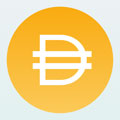
Long Live Bitcoin (on Ethereum!)
Ethereum’s Bitcoin derivatives will replace Bitcoin itself, making the Bitcoin network obsolete.

I’ve got a confession to make - I’ve been drinking the Ethereum kool-aid. It’s tangy and refreshing. If you can think of an acronym, I’ve looked into it - MKR, CDPs, DAI, DEXes, DY/DX, ENS, IPFS/IPNS, BAT, ERC-20, ERC-721, they are all systems that I’ve read about. With those systems, you can buy, sell, lend, borrow, trade, derive, register, point, code, and publish on the Ethereum chain. I like to think I know the space pretty well.
Now let me say, the current Ethereum experience feels very raw, but not necessarily in a bad way. It just feels bare-metal. Ethereum feels like buying a table off of craigslist, or repairing an old tractor with a hand wrench. If you screw up, there’s no customer service. There’s no one there to say “we’re sorry for the inconvenience” and give you a gift card.
But the flipside is that when you interact with Ethereum, there’s no stopping you. You have complete control. Like driving a gearshift on a private racetrack, it’s just you and the road. You can truly be your own bank, instead of waiting in line at Wells Fargo while they sign you up for five checking accounts.

So after I’m hypothetically done taking out a loan with my Ether (hypothetical cars and private racetracks don’t pay for themselves), I then buy some virtual cats, then send my friend some virtual game cards. Then I look back at my Bitcoin. There’s nothing wrong with it, but it just kind of… sits there.

Sometimes I visit blockchain.com and watch it do nothing. Sometimes I listen to the melodic chimes of the Bitcoin network on BitListen.com, a sonification app I wrote in 2013 and am now shamelessly plugging here. But that’s about the extent of it.
What if we could get Bitcoin to do verbs?
Enter WBTC

In January 2019, the WBTC token was launched on the Ethereum network. Every WBTC on Ethereum is backed by a BTC on the Bitcoin blockchain. Because WBTC is a standard Ethereum token, you can send it, buy it, sell it, borrow it and lend it without ever leaving the Ethereum ecosystem.
On top of unlocking all these new verbs when you tokenize BTC onto Ethereum, WBTC is also significantly cheaper than BTC to send to someone. It’s my opinion that WBTC would be the perfect way to store and use BTC, if it weren’t for WBTC’s dirty little secret: its counterparty trust issue. The secret is that there is a small yet critical difference between WBTC and BTC - WBTC’s sole value derives from the promise that their partner companies will give you back your real BTC when you ask nicely for it. Much like the dollar bill started out as an expectation that a bank would give you back your gold when you ask nicely for it. And we all know how that turned out.
While WBTC enables Bitcoin to hook into Ethereum to do useful work, it’s ultimately crippled by its reliance on this centralized group of companies to hold onto your real BTC for you.
In essence, WBTC is a glorified IOU for BTC. Works great until the IOU breaks. We can do better.
Enter tBTC
Announced last month, tBTC improves on WBTC by making those IOUs enforceable with financial penalties. tBTC defines a system where anybody can create these tBTC IOUs. But the trick is that to mint tBTC, each market-maker is required to self-insure by posting a bond in Ether that has value greater than the tBTC they are minting. That way, if an actor takes the BTC and runs, the tBTC system will confiscate that actor’s Ether bond and give it to the tBTC users to make them whole. This, plus some other neat tricks involving price feeds, multisigs, and auctions, means that as long as the tBTC smart contracts are functioning properly, there’s no risk of exit scams, thus no risk of tBTC losing its backing.
This is a massive improvement over WBTC. Because every tBTC token’s BTC backing is enforced by code, the system is always backed as long as it’s chugging along.
Read more about the differences between tBTC and WBTC.
To go even deeper and learn how tBTC aims to solve the Bitcoin-on-Ethereum problem once and for all, I highly recommend Wyre’s interview with the tBTC founders. It talks about how the tBTC founders’ research on secure computation led them to design tBTC.
And if you want a real challenge, try reading the tBTC spec!
Bitcoin is Dead. Long live Bitcoin!
Now, keeping in mind that Bitcoin is very close to being tokenized on Ethereum, here is my prediction for how Bitcoin will die, along with a timeline. In essence, I expect more and more Bitcoins to be tokenized on other chains over the years, eventually to the point that nobody actually uses the Bitcoin network proper.
-
2020: tBTC, or another equivalent system, will be released, allowing users to safely transfer (tokenize) Bitcoin onto the Ethereum network. A small fraction of users will do this so that they can borrow/lend it on Compound and Dy/Dx, and buy/sell it on Uniswap and Oasis. After all, why sit on Bitcoin when you could earn interest on it? Due to its mitigation of counterparty risk, tBTC will quickly become more popular than WBTC, and it will continue to grow.
-
2021: Ethereum 2.0 will be released, dropping the cost of using the network down from tens of cents to fractions of a penny. The Bitcoin network’s transaction costs will remain high. This will cause more Bitcoin users to tokenize their Bitcoin onto Ethereum, as not only are there verbs that you can do with tBTC that you can’t do with BTC, every verb is also less expensive, too.
-
2022-2027: Exchanges will start allowing Bitcoin deposits/withdrawals in tBTC in addition to just BTC. They will start seeing more and more users doing deposits/withdrawals in tBTC instead of BTC, because the tBTC transaction fees will be orders of magnitude cheaper, and tBTC will be flowing to and from popular Ethereum DeFi products.
-
2030: When people say “BTC” it will be implicitly assumed that they actually mean “tBTC”. Exchanges will simply list “Bitcoin” even though most customers are actually depositing/withdrawing in tBTC. An Ethereum Dapp will have become the fast and cheap Bitcoin payment network that Lighting Network tried and failed to be (though the vast majority of that Dapp’s usage will be people sending Ethereum-based stablecoins). Ninety percent of native Bitcoin transactions will be million-dollar debt settlements between cryptocurrency exchanges. Occasionally, someone will find an old hard drive with BTC on it, and convert it to tBTC on the Ethereum network in order to sell it and buy a private island.
-
2040: Bitcoin’s block reward will have halved five times since its inception, from 50 BTC down to approximately 3 BTC per block. Because Bitcoin’s block reward halves every 4 years forever, and because it’s impossible for Bitcoin’s price to double every 4 years forever, eventually Bitcoin’s hashrate will begin dropping.
-
2060: Bitcoin’s block rewards, and thus hash rate, will drop to a level that makes the network vulnerable to attack. Nobody will be paying Bitcoin transaction fees for the most part, because everyone will be using tBTC (or its successor) on Ethereum (or its successor) for everyday business, or alternatively, not really using BTC or tBTC much at all. Upon the first successful hashrate attack against Bitcoin, a consortium of companies and/or governments will try to redefine Bitcoin so that it is no longer the chain with the longest proof-of-work, but is instead the chain that they say it is. Users will have no choice but to either accept this or to freeze the Bitcoin network, disabling transfers and permanently enshrining all account balances. In practice, nobody will notice or even care that their tBTC are no longer backed by “real” BTC, and business will continue as usual. Bitcoin will be dead. Long live Bitcoin-on-Ethereum.
The cat’s out of the bag, and Bitcoin tokenization is here to stay. The Bitcoin network will not die with a bang, but with a slow fade into its own financial derivatives.
When all BTC is finally tokenized, the Bitcoin network itself will become irrelevant. Just like with the US dollar, eventually everyone will collectively forget that their tBTC were ever backed by something.
More Articles Tagged #cryptocurrency
-

The Block Size Debate: 5 Years Later
27 August 2020 cryptocurrency tech -

Thoughts on the MakerDAO USDC Proposal
17 March 2020 cryptocurrency tech -

How to Limit the Bandwidth of Bitcoin Core on Windows, Mac OS X, and Linux
16 July 2015 cryptocurrency tech tutorial
